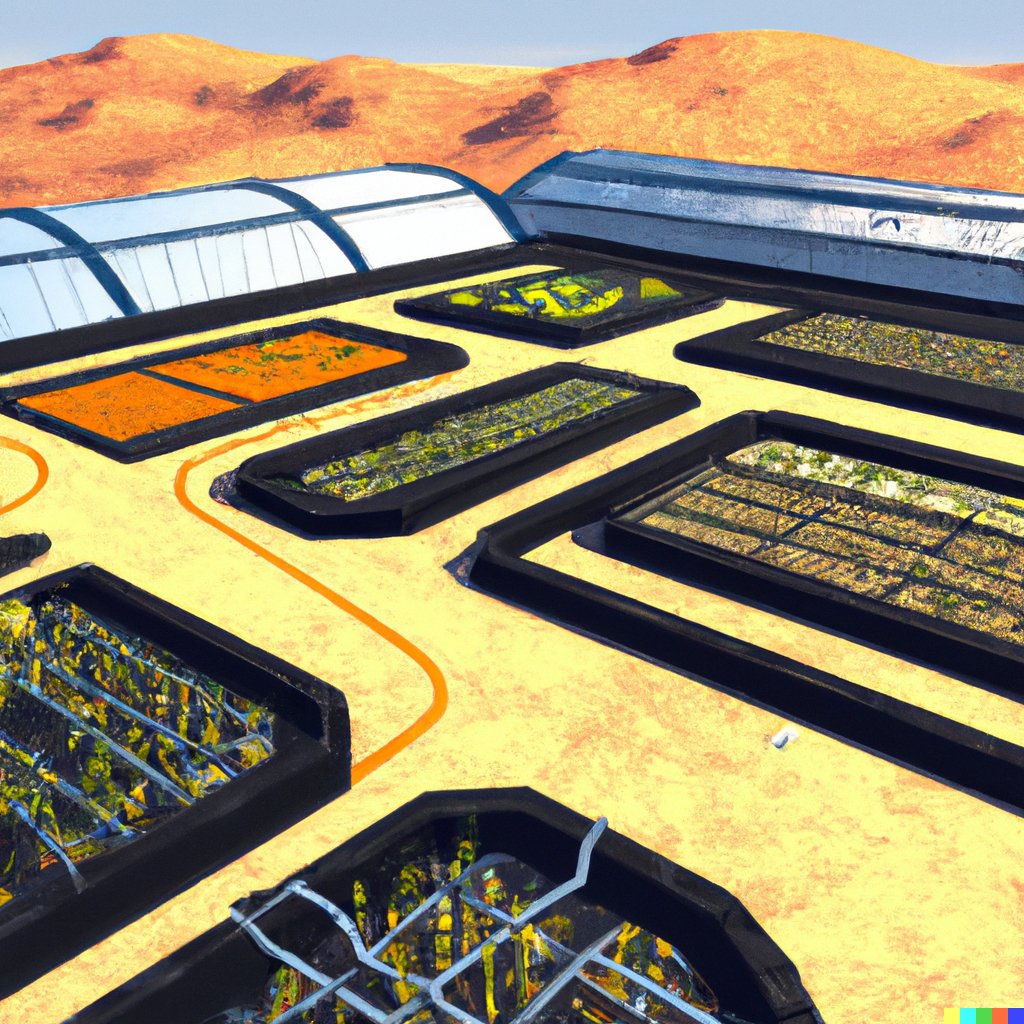
Are you concerned about where your food comes from and the impact it has on our planet? The current centralized food system has its drawbacks, and this is where decentralization comes in. In this article, we will explore the importance of decentralizing our food system and the potential benefits it can bring to both individuals and the environment.
Current Centralized Food System
The centralized food system refers to a few companies having power and control. It relies on big farming, worldwide supply, and standardizing. It usually prefers efficiency and profit over the environment, health, and local areas.
Who requires a food chain when you can have a food web? Decentralizing the food system means we don't put all our eggs in one basket. Unless that basket is made of waffle fries!
Food Security and Resilience
Let's explore the advantages of Food Security and Resilience. The table below outlines key components and their benefits:
| Components | Benefits |
|---|---|
| Local Food Production | Reduces dependence on imports and strengthens community resilience. |
| Supply Chain Independence | Reliable food source during disruptions such as natural disasters or pandemics. |
| Minimizing Food Waste | Decreases environmental impact and promotes resource efficiency. |
| Using Technology | Automates production, distribution, and tracking processes for more efficiency. |
Resilient food systems have many benefits; they reduce hunger, poverty, and inequalities, enable adaptation to climate change, and create employment.
Rapid urbanization has caused a big increase in food waste per person (100 kg/year). Decentralized systems can repurpose food waste through technologies like anaerobic digestion or composting to make bioenergy or fertilizers.
Traditionally, communities were self-reliant with small-scale agriculture practices. But industrialization led to centralized mass production where large agribusinesses took over. However, recent times have seen a revival of interest in localized food systems due to environmental and social reasons. Who needs a dating app when you can swipe left on monoculture and find your perfect match with diverse agriculture?
Diverse Agriculture
Let's look at a table about Diverse Agriculture.
| Crop Type | Harvest Season | Yield (tons/acre) |
|---|---|---|
| Corn | Summer | 8 |
| Wheat | Spring/Fall | 4 |
| Tomatoes | Summer/Fall | 10 |
| Apples | Fall | 6 |
Farmers can gain more yield and lower risk by planting different crops in different seasons.
Diverse agriculture also helps the environment. It decreases pests and diseases, so farmers don't need to use as many pesticides. Plus, it keeps soil fertile, by not depleting nutrients.
For sustainable farming, we can buy fresh produce from local farmers' markets or organic farms. This supports diverse agriculture, and it is made with love and care, not mass-produced.
Support for Small-Scale Farmers
Supporting Small-Scale Farmers - A Vital Step!
Small-scale farmers are essential for the creation of sustainable local markets, rural development and poverty reduction through agriculture. They use resources efficiently and minimize wastage, while also providing fresh and healthy produce.
- Local Market Creation - Backing small-scale farmers helps create vibrant local markets. This gives farmers a platform to sell their goods directly to customers and reduces dependence on large corporations.
- Rural Development - Supporting small-scale farmers stimulates rural economies, leading to improved living standards, better access to education and healthcare facilities, and overall rural improvement.
- Poverty Reduction through Agriculture - By providing resources, such as training, tools, and market access to farmers, we can help them break out of poverty.
Additionally, small scale farming is great for the environment. Organic and regenerative farming methods prioritize soil health and biodiversity, while chicken farms save food costs by repurposing leftovers.
It's our responsibility to stand up for small-scale farmers. Buy local produce, back initiatives that assist them and create a more resilient food system that focuses on sustainability, economic growth and social well-being! Cut down on carbon emissions - it feels just as good as reducing meat consumption!
Reduced Carbon Footprint
Reducing Carbon Footprint: A Significant Step!
We must address the environmental impact caused by food transportation emissions, and promote local food systems to take action on climate change. Here's how:
- Cutting Transportation Emissions: By sourcing food locally, the need for long-distance transport is lessened, resulting in a reduced carbon footprint.
- Sustainable Agriculture: Supporting local farmers encourages practices that have a lesser environmental impact, such as reducing chemical inputs, preserving biodiversity, and efficient land use.
- Resilience Against Climate Change: Localized food systems are better prepared to handle climate change. They can quickly adapt to changing conditions, and guarantee access to fresh produce while minimizing energy-intensive storage and transportation methods that emit greenhouse gases.
Decreasing carbon footprint not only helps with climate change but also leads to a more sustainable and independent food system, that's advantageous to both consumers and producers. By decentralizing, we make a positive contribution to the environment, economy, and community.
Let's embrace local food systems to ensure sustainability and environmental stewardship. By relying less on industrialized global supply chains, we can create a resilient food system that considers both ecology and human well-being. Join the decentralized agriculture movement today and be a part of something meaningful! Don't forget to preserve cultural heritage - it's like guarding a time capsule of tradition that future generations can enjoy.
Preservation of Cultural Heritage
Preserving cultural heritage in the food system is key. It keeps alive local food traditions and traditional farming practices, as well as passing knowledge from one generation to the next. By incorporating these aspects into our lives and passing them down, we stay connected to our roots. Let's look at the elements involved in preserving cultural heritage:
| Elements | Description |
|---|---|
| Local Food Traditions | Unique cuisines, ingredients, and cooking methods passed down through generations in specific regions. |
| Traditional Farming Practices | Farming techniques developed and perfected over time by communities to suit their environment. |
| Generational Knowledge Transfer | The transmission of knowledge and skills related to food preparation and farming from one generation to another. |
Cultural heritage not only safeguards traditional cuisine and farming, but offers quality time with family too. Cooking together brings generations closer while transferring knowledge. Here are some practical ideas to continue these traditions:
- Involve your kids in cooking: Teach them about the cultural significance of dishes and ingredients, and foster an appreciation for nature.
- Document family recipes: Record traditional recipes and share them with relatives or online. Create a family cookbook as an heirloom.
- Support local farmers: Buy ingredients from farmers who practice traditional farming. Contribute to preservation and enjoy quality produce.
- Participate in events: Attend festivals or workshops that celebrate your culture's food traditions. Engage in demonstrations to learn and appreciate.
Preserving cultural heritage is not only a way to honor ancestors, but to strengthen family bonds and teach values of nature to children. By engaging in these practices, we keep tradition alive and safeguard our cultures.
Water and Resource Conservation
Efficient water and resource management is a must for long-term sustainability. It ensures current needs are met, and safeguards future generations from scarce resources. This leads to reduced environmental impacts and increased resilience to climate change.
For example, a farm in California adopted innovative irrigation techniques. This reduced water consumption while maintaining crop productivity. It shows how conscious efforts towards water and resource conservation can have both economic and environmental benefits.
Plus, decentralizing the food system means no more guessing which mysterious additives our meals are infused with.
Improved Nutrition
Decentralizing the food system can bring great nutrition benefits. It gives people access to diverse foods, local produce, and improved health. Plus, it supports local farmers and promotes sustainable agriculture.
One example of the benefits of decentralizing the food system is the rise of urban gardens during World War II. People grew their own fruits and vegetables, supplementing diets during rationing. It showed the importance of community-driven efforts in enhancing nutrition.
Decentralizing the food system means improved access to quality and safety. It's like a GPS for your taste buds!
Enhanced Food Quality and Safety
Semantic NLP Variation: Enriching Food Quality and Ensuring Safety
Food quality and safety are essential components of a decentralized food system. Local sourcing and cultivation reduce contamination risks and allow for stricter adherence to food handling standards.
The following table illustrates factors which contribute to better food quality and safety:
| Factors | Effects |
|---|---|
| Local Sourcing | Fresher produce |
| Cultivation Practices | Elimination of pesticides |
| Animal Welfare Standards | Healthier livestock |
| Reduced Contamination | Lower risk of pathogens |
| Transparent Supply Chain | Traceability and accountability |
Besides these factors, a decentralized food system increases consumer trust due to more transparency. This encourages informed decisions that benefit both consumers and suppliers.
A great example of prioritizing food quality and safety is the BSE outbreak in 1980s. This event led to numerous cases of Creutzfeldt-Jakob disease in humans, prompting stronger regulations on livestock feed.
Supporting local farmers creates stronger economies and ensures that the only thing being outsourced is dad's dad jokes at the dinner table.
Strengthening Local Economies
Strengthening the Economic Fabric:
Support local economies by decentralizing the food system. Many benefits, like saving money, good paid jobs, and a better community economy.
Diversifying Local Economy:
Prioritize local food system to create stability and entrepreneurship. Benefits go beyond immediate consumption, increasing the region's economic value.
Maximizing Local Economic Potential:
Decentralize food system to use unique strengths & resources. Value local production & consumption to have a sustainable ecosystem, aiding the local economy.
A True History:
Communities that decentralized food systems had great improvements to their local economy. Job creation, increased income streams & more self-sufficiency - all contributing to a strong economic fabric.
Community Empowerment:
Food is not just about growing kale, but also growing connections and a sense of belonging. Plus a little extra cilantro.
Community Empowerment
Realize the meaning behind Community Empowerment and back decentralization attempts. Doing so helps build reliable and sustainable food systems. It also gives people a feeling of being part of something. Taking part in decisions makes people more in control of their food situation and strengthens the link between them and their local food sources.
Not supporting community empowerment may lead to missed chances for economic, social, and environmental growth. Not helping decentralize could mean a shift to systems that prioritize money over welfare. This could be harmful to both people and the environment. It is essential to understand the significance of community empowerment for a decentralized food system and take action to back such endeavors for a brighter tomorrow.
What is the importance of decentralizing the food system?
The importance of decentralizing the food system lies in creating a more resilient, sustainable, and equitable food system. By distributing food production, processing, and distribution to smaller, localized systems, we can reduce our reliance on large-scale industrial agriculture and improve access to fresh, healthy food for all communities.
How does decentralizing the food system help promote sustainability?
Decentralizing the food system can help promote sustainability in several ways. By reducing the distance that food travels from production to consumption, we can decrease the carbon emissions associated with transportation. Additionally, smaller, localized food systems tend to use more sustainable practices, such as organic farming and conservation methods, which can help protect the environment.
What impact does decentralization have on food security?
Decentralizing the food system can have a positive impact on food security. By diversifying food production and distribution, we can reduce the risk of disruptions caused by factors such as extreme weather events or supply chain disruptions. This can help ensure that communities have access to a variety of nutritious food options, even during times of crisis.
How does decentralization promote equity in the food system?
Decentralizing the food system can promote equity by creating more opportunities for small-scale farmers and producers, especially those from marginalized communities, to participate in the food system. This can help to create a more fair and just food system by providing economic opportunities and access to resources for those who have historically been excluded from the industrialized food system.
What challenges may arise in the process of decentralizing the food system?
There are several challenges that may arise in the process of decentralizing the food system. These may include resistance from large corporations and existing centralized systems, lack of infrastructure and resources in certain areas, and the need for education and training for farmers and producers to transition to decentralized practices. However, these challenges can be addressed through collaborative efforts and support from government policies and initiatives.
How can individuals support the decentralization of the food system?
Individuals can support the decentralization of the food system by buying from local and small-scale farmers and producers, advocating for policies that support decentralized food systems, and educating themselves and others about the benefits of decentralization. Additionally, individuals can support community-based initiatives and organizations that are working towards building more resilient and equitable food systems.
Conclusion
Decentralizing the food system is a transformative approach that addresses the challenges of a centralized and industrialized food production model. By supporting local farmers, preserving cultural heritage, and promoting sustainable practices, a decentralized food system can create a more resilient, equitable, and healthier food future for all.
In conclusion, decentralizing the food system is a fundamental step towards building a more resilient, sustainable, and inclusive food system. By embracing localized agriculture, supporting small-scale farmers, and reducing the carbon footprint, we can create a food system that nourishes both people and the planet for generations to come.














